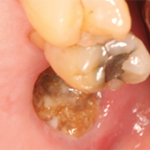Glucocorticoids are widely prescribed by rheumatologists, and the effects of daily and cumulative doses of these drugs on bone mineral density (BMD) are important elements of a draft clinical guideline document presented on Nov. 13 at the 2016 ACR/ARHP Annual Meeting in Washington, D.C.
Leaders of the ACR guideline project discussed their recommendations at the session, Glucocorticoid-Induced Osteoporosis Prevention and Treatment: An Updated ACR Clinical Guideline. General osteoporosis treatment recommendations from the National Osteoporosis Foundation were published in 2014, but the ACR has not published a new guideline for this specific patient population since 2010.1 These draft recommendations are presently being reviewed by the ACR for final approval and are anticipated to be published in early 2017.
Fracture Risk Factors
Patients vary greatly in their major osteoporotic fracture risk due to age, sex, race, dosage levels and other factors, said Lenore Buckley, MD, MPH, the project’s principal investigator and clinical chief of rheumatology at Yale University School of Medicine, New Haven, Conn.

Lenore Buckley, MD, MPH, the project’s principal investigator and clinical chief of rheumatology at Yale University School of Medicine, New Haven, Conn.
“All of these factors are important to take into account as you look at the fracture risk for an individual patient,” she said.
About 1% of the U.S. population is currently treated with chronic glucocorticoids, said Dr. Buckley.2 “We also know that bone loss is greatest in the first year of use and that the greatest loss is in the vertebral bone. We know the predictors of fractures include the pattern of glucocorticoid use, the dose and the duration.”
Vertebral fracture risk rises dramatically in patients who take high doses, or ≥7.5 mg/day and higher, and in those who have received a high cumulative dose over many years, or ≥5 gm.3 The guideline voting panel looked closely at available evidence on specific patient populations’ bone density changes and fracture risk, especially younger patients on very high doses, or >30 mg/day.
“Although very high doses of glucocorticoids are used only in a small [percentage] of the patients, the risk of fracture significantly increases with long-term, high-dose glucocorticoid treatment,” said Dr. Buckley. The average patient isn’t in this very high-dose group, but this group is where many fractures occur. As the dose increases, the risk increases. It is not unusual for rheumatologists to prescribe high doses, she added. On the other hand, evidence shows that once the patient’s glucocorticoid dose is discontinued, bone density can recover. “So the ability of bone density to improve spontaneously is an important consideration in younger patients,” she said.

